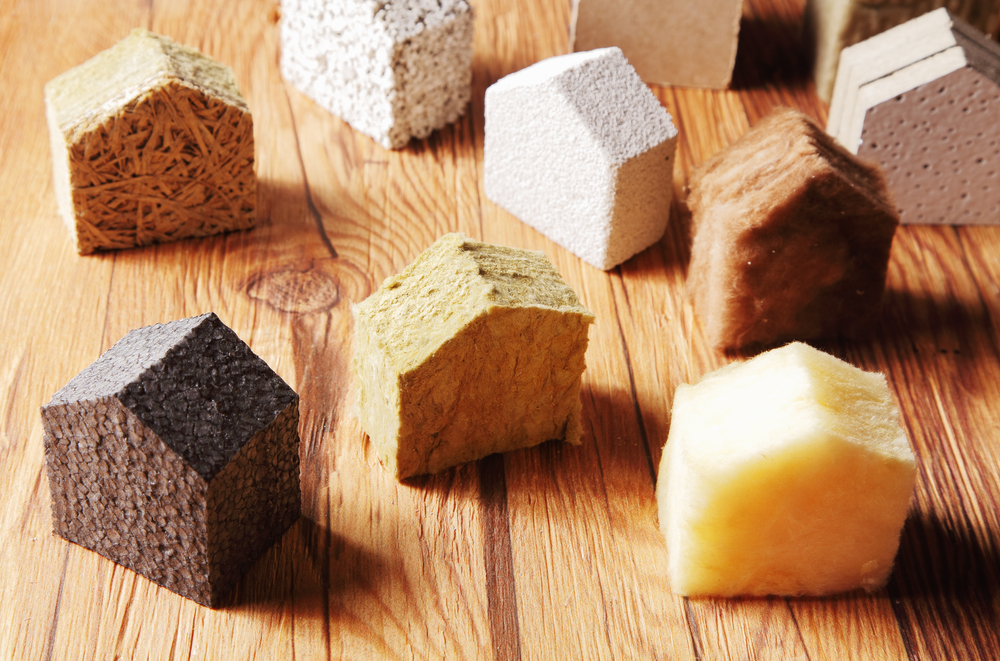Insulation is one of the most important elements of your home that you’ll probably never actually see. It lives between your walls and ceilings, and can affect many things: ventilation, air sealing, sound, and energy efficiency.

When you’re building a home, you have so many decisions to make. Before choosing insulation, you need to consider its longevity and quality. There are three main types of insulation that homeowners have to choose from, and each has its own unique features.
- Cellulose
Cellulose is an eco-friendly approach to insulation. It is made of 80% post-consumer recycled newsprint, and the fiber is chemically treated with nontoxic borate compounds, so that it is resistant to fire, insects, and mold. Overall, cellulose is efficient, nontoxic, and affordable. However, in New Mexico, a national supplier came here several years ago and drove the price down so low they made their competitors unable to compete with cellulose. They were able to do this because they had massive volume breaks nationally, and the local guys did not have that buying power. Once they dominated the market in cellulose, they raised their pricing, and the local companies choose not to go down that road again, causing the cost to be artificially inflated. Although this would be the preferred insulation method overall, it is cost prohibitive for most new construction.
Even though cellulose insulation is made of paper, it’s considered to be more fire resistant than other types of insulation, because of the chemical treatment and the fact that cellulose fibers are more tightly packed. This also makes it more resistant to air leaks. This type of insulation can be installed by blowing or spraying. Cellulose can be applied wet or dry. Wet is messy, and blown in like papier mache, and then shaved backed to the studs. The extra material that doesn’t stick inside the walls gets put back into the hopper and re-shot in the walls – so there is very little waste.
- Blown-in fiber
Loose-fill insulation is blown into walls using a power blower. This method of installing insulation works well in renovations when you don’t want to remove all of the sheetrock, because it can easily fit around obstructions such as wiring and pipes. To install blown-in insulation, technicians drill holes in the ceiling and fill in the walls with fiber. It is a tighter pack, and provides a higher R-Value than fiber glass rolls, as it can be manipulated around plumbing.
When used in new construction, netting is stapled along the studs and blown into the walls starting at the bottom, and is then blown into the wall cavity between the studs and netting. Make sure your contractor is present, to ensure that the cavity is completely filled and tight. It is important to make sure the cavity is tight but not overly blown, as installing the drywall will result in nails and screws popping out of the walls, and the drywall tape migrating, causing visible seams or cracking years later.
- Fiberglass rolls
Long strips or rolls of fiberglass insulation are another option for homeowners. This type of insulation is perfect for new projects, or extreme renovations where the walls are torn out. Because large pieces of insulation are rolled out and carefully placed in the walls or ceilings, it’s a much neater technique than blown-in insulation, and offers high levels of fire and heat resistance and air tightness.
Note: How to determine your R-Value in walls and Ceiling
To determine your R-Value for blown in fiber, multiply the depth of the area (ceiling or wall) by 3.1-3.4. The range is due to how compact the fiber is applied. The walls can be compacted at a 3.4 density, but the ceiling is blown in loose, so a more accurate multiplier would be 3.1. So, a 2×6 stud exterior wall would have an R-value of 3.4×6” – an R-Value of 20.4. Most installers round up and state 21. If your builder says a higher R-value can be achieved, remember that can only happen if the walls (depth) is greater. It is unusual to have a 2×8 exterior wall.
Another very important consideration is the foam insulation used to seal all penetrations around the windows, doors, walls, and floor before insulation is installed. Inspectors only are looking for windows and exterior doors, so make sure your builder is present to insure the penetrations, such as gas lines, water values, vents, etc., are foamed as well. This not only stops air penetration, but also helps prevent critters from entering your new home.
Building a new home can be overwhelming, with so many decisions to be made. At John Mark Custom Homes, we take pride in educating our home builders every step of the way.